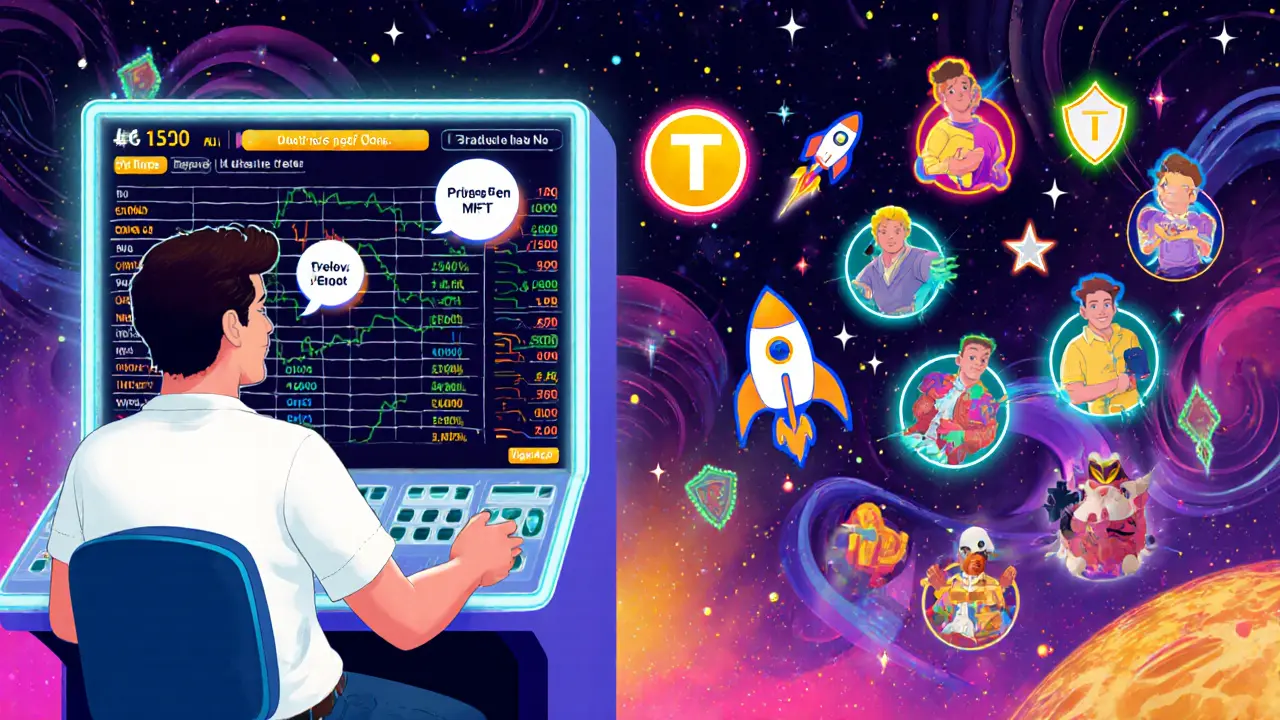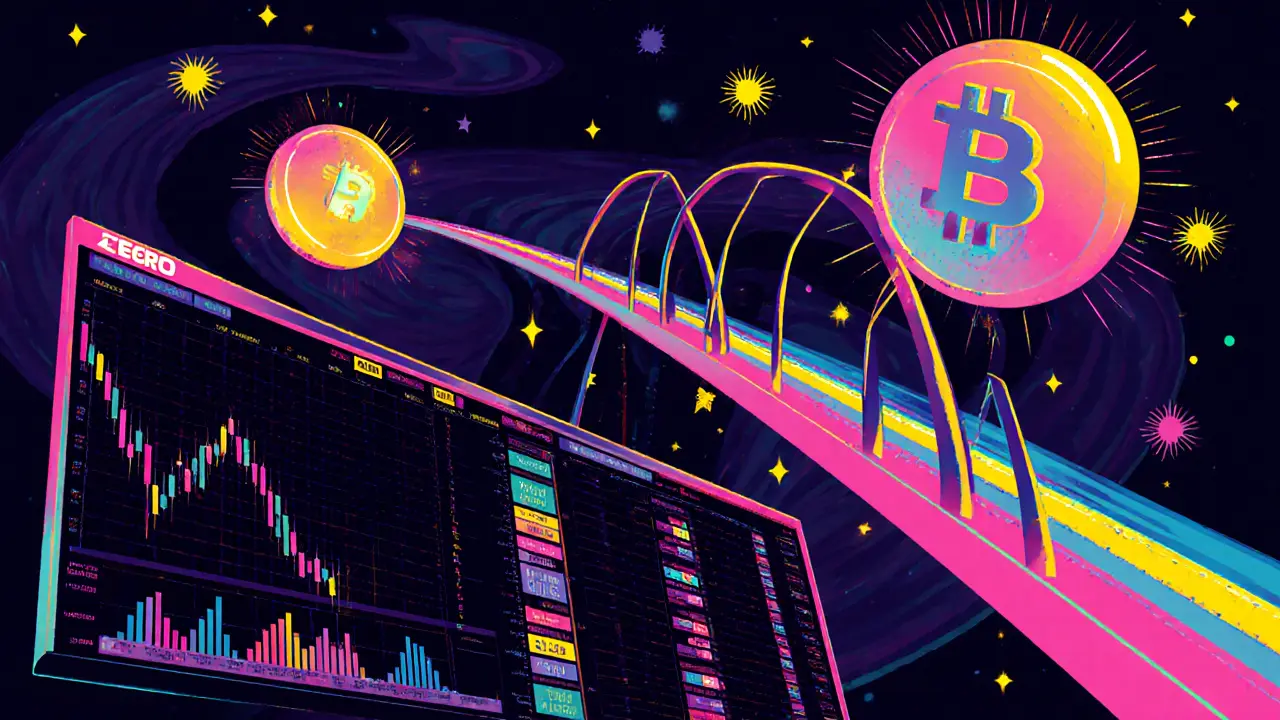Tegro Trading Fee Estimator
Fee Calculator
Estimate potential trading fees using industry benchmarks and TGR token discounts
- Gas-less quotes No gas fee for quotes
- TGR Token TGR
- MEV Protection Advertised
- Bridge Risk Medium risk
Disclaimer: This is an estimation tool based on industry benchmarks. Actual fees on Tegro may vary significantly. Tegro does not publicly disclose its fee structure.
TGR token discounts are based on community reports and not official Tegro documentation.
When you hear the name Tegro is a cross‑chain DeFi platform that blends a decentralized exchange (DEX) with a gaming marketplace and a merchant‑payment system. It aims to give traders the speed of a centralized order‑book while keeping the security of a non‑custodial blockchain. This review breaks down what Tegro actually offers, where it shines, and where the unknowns lie, so you can decide if it belongs in your crypto toolbox.
TL;DR - Quick Takeaways
- Hybrid design: order‑book DEX on TON & BSC, plus a game‑asset market and Tegro Money payment hub.
- Non‑custodial trading with gas‑less quotes and built‑in MEV protection.
- Native TGR token is used for fees, payments, and incentives, but tokenomics are vague.
- Security: no public audit reports, limited community size, bridge risk present.
- Fees and performance data are not disclosed, making cost comparison difficult.
Core Architecture & Cross‑Chain Mechanics
Tegro operates on two blockchains: The Open Network (TON) and Binance Smart Chain (BSC). A custom bridge lets users move assets between the two networks without leaving the Tegro UI. The bridge is the technical heart of the platform, but the documentation does not reveal whether it uses a trusted‑validator set or a decentralized relay, so users should treat bridge transactions with the same caution they would with any third‑party bridge.
Order flow follows a traditional order‑book model rather than the automated‑market‑maker (AMM) design used by most DEXs. Traders see depth charts, limit orders, and market orders, and they can place quotes without paying gas - Tegro calls these “gas‑less quotes”. The actual trade execution still incurs gas on the underlying chain (TON or BSC), but the quote‑generation step is off‑chain, reducing friction for quick price checks.
Trading Features & User Experience
The trading UI leans into a dark‑theme with neon accents, targeting high‑frequency traders who value data density. Real‑time market data, candlestick charts, and a detachable order‑book panel help users monitor spreads and depth. The platform also advertises MEV protection, claiming that trades are routed through a private mempool to avoid front‑running. No technical whitepaper details the exact mechanism (e.g., Flashbots integration), so the claim remains unverified.
Because Tegro is non‑custodial, your wallet (MetaMask, Trust Wallet, or a TON‑compatible wallet) stays in control of funds at all times. The platform merely reads your balances and signs transactions; there is no deposit into a custodial pool. This design eliminates the typical “exchange hack” risk but also means you’re responsible for securing your private keys.
Gaming Marketplace & Bounty System
Beyond trading, Tegro hosts a game‑asset marketplace where NFTs, skins, and in‑game items are bought and sold. The marketplace adopts an intergalactic visual style, with animated avatars and neon‑glow badges to make the experience feel like a sci‑fi arcade. Developers can tap into “Tegronomics” - a set of economic tools that help design sustainable token economies for play‑to‑earn games.
One standout feature is the bounty system. Users post “bounty” tasks (e.g., “level up to rank 10 in Axie Infinity”) and set a payout in TGR. Skilled gamers, dubbed “bounty hunters”, claim the tasks and receive the reward once verified by the platform. The workflow includes a dashboard, wallet integration, and automated escrow, but the fee structure for posting bounties is not publicly listed.

Tegro Money - Payment Processing for Merchants
Tegro Money is a sister service that lets businesses accept crypto payments. It supports standard card‑less payments, recurring subscription billing, and a specialized AFT (Card2Account) channel for quick loan repayments. The API documentation provides PHP code snippets, indicating a focus on web developers, but there are no SDKs for other languages at the time of writing.
For merchants, the biggest selling point is the ability to settle in TGR or fiat via the platform’s own conversion engine. However, the exact conversion fees, payout latency, and compliance (KYC/AML) procedures are not disclosed, leaving potential users to request a custom quote.
Tokenomics - The Role of TGR
The native TGR token is the payment rail for everything on Tegro: trading fees, marketplace commissions, and merchant settlements. Yet the token’s supply metrics-total supply, circulating supply, vesting schedule-are missing from official sources. No audit reports have been published, and the token is not listed on major aggregators like CoinGecko or CoinMarketCap, which makes price discovery difficult.
Without clear tokenomics, it’s hard to assess whether holding TGR offers real utility beyond paying fees. Some users report that the platform offers fee discounts for TGR holders, but the percentage discount fluctuates and is not documented in a transparent fee table.
Security, Audits & Risk Assessment
Security is the biggest gray area. Tegro promotes a non‑custodial design and mentions MEV protection, but there are no publicly available smart‑contract audit reports from firms such as CertiK or PeckShield. The GitHub organization (TegroTON) has only about 40 followers and limited commit activity, suggesting a small developer community.
Cross‑chain bridges historically attract attacks; without an audit, the bridge could be a single point of failure. Users should start with small amounts, test both the trading and gaming flows, and keep an eye on community channels for any security notices.

How Tegro Stacks Up Against Competitors
| Feature | Tegro | Uniswap (AMM) | PancakeSwap (AMM) |
|---|---|---|---|
| Order Model | Order‑book (limit & market) | AMM (liquidity pool) | AMM (liquidity pool) |
| Cross‑Chain Support | TON ↔ BSC bridge | Ethereum only (layer‑2 via Optimism) | BSC only (limited bridges) |
| Gas‑less Quote | Yes (off‑chain pricing) | No (on‑chain swaps) | No (on‑chain swaps) |
| MEV Protection | Advertised, details unknown | Flashbots optional | Flashbots optional |
| Gaming Marketplace | Integrated NFT & bounty system | None | None |
| Fees (maker/taker) | Undisclosed publicly | 0.30% total | 0.25% total |
The table shows that Tegro tries to differentiate itself with an order‑book UI, a gaming layer, and a cross‑chain bridge. However, the lack of transparent fee data and audit reports means you’re trading off clarity for novelty.
Pros & Cons Summary
- Pros
- Order‑book model gives price‑depth visibility.
- Gas‑less quote reduces small‑trade friction.
- Integrated gaming marketplace opens new earning avenues.
- Non‑custodial design keeps you in control of private keys.
- Cons
- Missing public security audits and audit reports.
- No disclosed fee schedule; hard to compare costs.
- Limited liquidity data; unknown market depth on many pairs.
- Small developer community and uncertain roadmap.
- Bridge introduces additional attack surface.
Getting Started - Step‑by‑Step Walkthrough
- Install a compatible wallet (MetaMask for BSC, Tonkeeper for TON).
- Navigate to tegro.io and click “Connect Wallet”.
- Transfer a small amount of BNB or TON to your wallet if you don’t have any.
- Use the “Deposit” button to move funds onto the platform; the bridge will prompt a transaction on the source chain.
- Explore the order‑book view, place a limit order, and watch the quote appear instantly (no gas charged).
- If you’re a gamer, switch to the “Games” tab, browse available bounties, and click “Accept” to lock the reward in escrow.
Always start with less than $100 to test the flow, especially the bridge step. If anything feels off, pause and check the official Telegram channel for updates.
Final Verdict
Tegro is an ambitious attempt to merge DeFi trading with a gaming economy. Its order‑book DEX, gas‑less quotes, and integrated marketplace make it stand out from pure AMM DEXs. Yet the platform suffers from a lack of transparent data-no public audits, no fee schedule, and no reliable liquidity metrics. For traders who love novelty and are comfortable with higher risk, Tegro can be an experimental playground. For anyone moving sizable capital, the unknowns outweigh the potential upside until the team releases more detailed security and financial disclosures.
Is Tegro a centralized exchange?
No. Tegro is a non‑custodial DEX that lets you keep your private keys. The platform merely facilitates order matching and settlement on TON or BSC.
What fees does Tegro charge for trades?
The exact maker/taker percentages are not publicly posted. Users are encouraged to check the fee page after login or contact support for a detailed breakdown.
Is there a smart‑contract audit for the bridge?
As of October 2025, Tegro has not released an independent audit report for its bridge or core contracts. Users should treat the bridge as experimental.
How does the bounty system work?
Bounty posters create a task, set a payout in TGR, and lock the amount in escrow. Hunters claim the task, complete the gaming objective, and submit proof. Once verified, the escrow releases the reward.
Can I use Tegro Money for fiat payouts?
Tegro Money can convert crypto payments into fiat via its internal conversion engine, but merchants must arrange a fiat settlement method with the platform’s sales team.

Write a comment